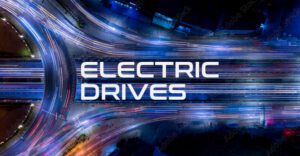General Motors (GM), who plan to have an electric vehicle capacity of more than a million in North America by 2025, have announced a feature standard in its Ultium-based electric vehicles (EVs) that captures and repurposes waste energy from the battery.
Through the Ultium electric vehicle platform’s energy recovery system, this waste energy can increase a vehicle’s range, reduce battery energy needed for heating, increase charging speed and even enable sportier driving. Hopefully, this will help attract potential customers to make the transition to electric vehicles sooner.

Electric vehicle batteries, power electronics and other propulsion components produce heat. The Ultium platform can recover and store this waste heat from the Ultium propulsion system. Plus, it can also capture and use humidity from both inside and outside the vehicle, including body heat from passengers.
The Ultium platform can then deploy energy stored through the recovery process to heat the cabin more quickly in cold weather than comparable systems found in vehicles with an internal combustion engine.
Ultium’s energy recovery capabilities reduce the need to power heating and other functions from energy stored in the battery, which provides GM’s electric vehicles with up to 10 percent more range. This potentially allows more power and range than vehicles with similarly sized batteries without energy recovery capabilities.
With its active heating capabilities, Ultium vehicles can also potentially charge more efficiently by warming up the batteries before charging
Ultium’s energy recovery even enables GMC HUMMER EV’s available Watts to Freedom feature. Energy recovery precools the propulsion system to help the all-electric supertruck accelerate from 0-60 mph (0-97kph) in approximately three seconds.

Doug Parks, GM executive vice president, Global Product Development, Purchasing and Supply Chain, said: “Having a ground-up EV architecture gives us the freedom to build in standard features like Ultium’s energy recovery capabilities.
“This helps us squeeze more efficiency, performance and overall customer benefit out of our EVs.”
Covered by 11 patents and four publications, the development of Ultium energy recovery traces its inception back to GM’s first electric vehicle, the EV1, in the late 1990s, when GM engineers first developed an EV heat pump. Ultium energy recovery is available on all current Ultium vehicles and is planned for future Ultium vehicles.




